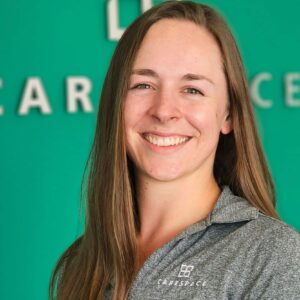
Greater Trochanteric Pain Syndrome (GTPS) is a common problem that affects the outer part of the hip. It is caused by inflammation of the tendons, bursae or muscles around the greater trochanter, which is a bony prominence on the outside of your thigh bone. GTPS can be extremely painful and limit your ability to perform daily activities. Fortunately, there are several quick fixes that can help you get rid of GTPS and get back to your normal routine. In this blog post, we will discuss two effective solutions for treating GTPS – physiotherapy and chiropractic care.
Physiotherapy for GTPS
Physiotherapy is one of the most effective treatments for GTPS. It involves exercises that help strengthen the muscles around your hip joint and reduce inflammation in the surrounding tissues. A physiotherapist will assess your condition and develop a customized treatment plan based on your individual needs.
Some common physiotherapy techniques used to treat GTPS include:
Stretching exercises: Stretching can help loosen up tight muscles and improve flexibility around the hip joint.
Strengthening exercises: Strengthening your hip abductor muscles can help stabilize your pelvis and improve overall hip function.
Soft tissue massage: Massaging the soft tissues around the greater trochanter can help reduce inflammation and alleviate pain.
Ice therapy: Applying ice packs to the affected area can help reduce swelling and relieve pain.
Chiropractic Care for GTPS
Chiropractic care is another effective treatment option for GTPS. It focuses on restoring proper alignment of your spine and joints to improve overall body function. A chiropractor will perform a thorough examination to identify any misalignments or imbalances in your body that may be contributing to your GTPS.
Some common chiropractic techniques used to treat GTPS include:
Spinal adjustments: Manipulating the spine can help improve nerve function and reduce pain in the hip region.
Soft tissue therapy: Using various soft tissue techniques, such as active release technique or Graston technique, can help reduce muscle tension and improve mobility.
Exercise prescription: A chiropractor may recommend specific exercises to strengthen your hip muscles and improve overall body mechanics.
Greater Trochanteric Pain Syndrome can be a debilitating condition that affects your daily life. However, with the right treatment approach, you can get rid of GTPS and resume your normal activities. Physiotherapy and chiropractic care are two effective solutions for treating GTPS. Consult with a physiotherapist or chiropractor to develop a personalized treatment plan that fits your individual needs and goals. With proper care and commitment, you can say goodbye to GTPS once and for all.
If you have any questions or would like to explore further, please book a free, no-charge online appointment with either myself, Dr. Laura Rashty, BSc, DC, or another Kitchener chiropractor at CARESPACE. We are happy to listen and are here to help!

